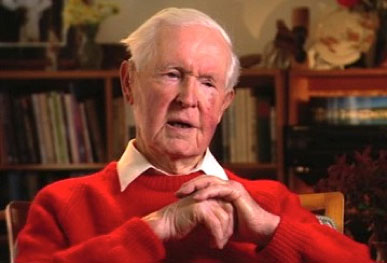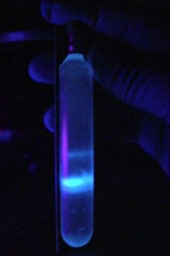‘We will strike you when you least expect it, beneath Eternity where the windmill has been stolen. This is the first of three warnings.’
- the opening lines from The Beijing Conspiracy
From China’s western-most province of Xinjiang, near its border with Pakistan, comes the threat of a devastating biological attack and a coded ultimatum. In the White House Situation Room, the President and his cabinet dismiss it. But CIA agent Curtis O’Connor isn’t so sure. The warning comes from Dr Khalid Kadeer, a brilliant Muslim microbiologist. O’Connor, an expert on bioterrorism, knows Kadeer isn’t bluffing. So does Australian-born Kate Braithwaite. She works in a deadly hot-zone laboratory, on the U.S.A’s own top-secret biological weapons program, genetically engineering Ebola, Marburg and Smallpox to create a super virus. If the results of Dr Braithwaite’s research fall into the wrong hands, millions of people will die.
As Curtis O’Connor and Kate Braithwaite work to unravel the riddles of Kadeer’s warning, the begin to uncover a threat more sinister than they had imagined – a threat from within, from a man whose lust for power drives him to orchestrate a plan that will devastate the human race. The clock is ticking …
If you are going to combine the ‘hard-to-catch’ but deadly Ebola RNA virus with the ‘easy-to-catch’ but not so deadly airborne Smallpox DNA virus to produce a super virus with no known vaccine, it helps to have a background in microbiology and biochemistry – compulsory subjects in a Bachelor of Applied Science in Oenology – the chemistry of wine. I spent some time at the Pepper Tree winery in Australia’s Hunter Valley, learning to make wine under the tutelage of Chris Cameron, Pepper Tree’s Chief Winemaker, who also trained as a chemist. Their laboratory was superbly equipped.
Research and Background to The Beijing Conspiracy

Victoria Barracks Sydney – built by the convicts 1841 - 1846. - Pic: Nick-D 2010
My last appointment in the Australian military was Head of Planning for Defence Security for the Sydney Olympics. In the military, it is usually the case that the longer the title, the less important the job! In earlier days I can remember taking up the appointment of Staff Officer Grade One Operations Headquarters Field Force Command at Victoria Barracks. It’s a wonderful sandstone convict barracks (pictured) in Paddington in Sydney, but my bloody title stretched off my desk, although in ‘military speak’ it could be reduced to SO1 (Ops) HQ FFComd. At the time, the deck chairs were being rearranged on the Titanic, and Field Force Command was morphing into a new organisation – Land Command, and to demonstrate their indispensability, the Land Command chaps (and chapettes) were determined to snaffle all the mail. As a result, I would get one or two files (a week), so a lot of time was spent running in Centennial Park. It is one of the great benefits of service in the military – no-one ever questioned it if you were out running!
That said, the appointment title of Director General Defence Security for the Sydney Olympics (DGSSO, if my memory serves me correctly) might have been long, but the responsibility was commensurately heavy. The British policeman, Peter Ryan, had been appointed as NSW Police Commissioner, and as well as my responsibilities to the Chief of the Defence Force, I reported to Commissioner Ryan, as he held ultimate responsibility for the security of the Sydney Olympics. The NSW Police Olympic Command Centre was staffed by quite brilliant young men and women from the NSW police force and other State and Commonwealth agencies – headed up by one of the most professional and capable policemen I have had the privilege to serve with – Assistant Commissioner Paul McKinnon. McKinnon and I were kindred spirits – we both had scant time for most politicians and ladder climbers, added to which both of us had a conduct record as long as your arm. We got along famously. But it was this appointment that had me involved in the dark recesses of counter-terrorism. The public didn’t know it (nor should they – the Olympics is a sporting competition), but an enormous amount of effort went into keeping them safe. Paul Taylor, the head of Porton Down, Britain’s top secret chemical, biological, radiological and nuclear research establishment, was another outstanding professional who provided exceptional support. For example, unbeknown to the general public, we tested the air around Sydney in September 1999 to gain a computerised footprint against which, one year later, we could compare air samples during the Sydney Olympics, just in case there was a chemical, biological or nuclear (and we had that one covered too) attack during the games. I spent a lot of time as a terrorist – thinking about the best way to attack Sydney and the Games, and as a result, how to defend against that – which led me to write The Beijing Conspiracy – as a warning as to what was possible.

Smallpox – a double-strand DNA virus
What, I thought, as I pondered the plot of The Beijing Conspiracy, if terrorists were to gain access to biological weapons? My background in science helped here – without any great distinction, I took maths, physics and chemistry at Duntroon, and later did another chemistry degree in oenology – the chemistry of wine (Dean’s award for that one – I might have shown more interest, but that’s another story). That background in, amongst other things, biochemistry and microbiology enabled me to theorise on what might be possible. The SARS epidemic had tens of thousands walking around in masks – what, I wondered, might be even more devastating and bring the world to its knees?
I started to ponder smallpox. Smallpox is what is known as a deoxyribonucleic acid virus – a twin strand DNA virus. The virus has been around since 1500 BC, and from time to time, epidemics such as the one on Japan in the 8th century that wiped out a third of the

DNA-RNA Difference - Image: Sponk
population, have wreaked devastation. An airborne virus, smallpox is highly contagious, but apart from the tabloid headlines that would panic the population, smallpox is only (!) 30% deadly, so from a terrorist point of view, Ebola, a ribonucleic acid or RNA single strand virus with a fatality rate in excess of 90%, is far more effective. But despite the reports of Ebola spreading in West Africa from time to time, it is very hard to catch – you have to exchange bodily fluids. In West Africa, funeral rites include dead bodies being washed, and the attendees then drink the water – a cultural habit that invites disaster. For a terrorist though, Ebola would be hard to spread around the world, unless … I wondered. What if I used an enzyme to split the strands of smallpox and marry one
strand up with the single strand of Ebola. Without getting too technical, a DNA helicase enzyme can wrap around one of the DNA strands and slide down it, separating the two strands in what is normally a replication process. If we combine one strand of the smallpox virus with an Ebola strand, we would finish up with Ebolapox – a super virus that, unlike Ebola, would be airborne, highly contagious, and over 90% deadly, with no cure.

Ebola - a single-strand RNA virus
That said, should I write this? Would this give the terrorists ideas? I made an appointment to see the Head of ANU’s John Curtin School of Medicine who gave generously of his time. In his view, the genie was already out of the bottle – virologists had already recognised the danger and terrorists would not need a novel to point the way. Then he took me across the corridor to meet with an old scientist, who’s name I didn’t quite catch.
‘So you want to know about smallpox, young man?’ the old scientist asked.
There was a gravitas about this old scientist – and then I caught sight of what is known as ‘the Big Red Book’ on his coffee table, and a shiver ran down my spine. I was in the presence of one of the world’s great virologists – Australia’s Professor Frank Fenner. Together

The late Professor Frank Fenner – a great Australian scientist
with American epidemiologist, Donald Henderson and three others, Fenner was credited with the final eradication of smallpox and they published an account of the World Health Organisation’s campaign in a 1500 page tome which became known as ‘the Big Red Book’.
The Warnings
The first of the three warnings involves the vulnerabilities of the water supplies in big cities. Caesium 137 or Cs-137 has been used as a radioactive source for radiation therapy. On 13 September at Goiânia, in Brazil, radiotherapy equipment was stolen from an abandoned hospital and dismantled, revealing the eerie blue glow of radioactive Cs-137 and resulting in a number of deaths. Over 100,000 people were examined for signs of radioactive material in their bodies. But there is another property of Caesium that caught my attention. One of its most common forms is a salt – Caesium Chloride, which is highly soluble in water. What, I thought, if I introduced it into the water supply of large cities ….
There will be some who think giving terrorists ideas like this is outrageous. My response is simple. Having spent many years studying the terrorist mind, and dreaming up unthinkable scenarios against the Sydney Olympics (some of which I don’t make public), it would be a great mistake to think that terrorists need the ideas of novelists and writers. The properties of Cs-137 are widely known – as is the threat to our water supplies. The warning for us is to ensure there is much greater security around substances which, in the hands of a terrorist, can do us damage.

Deadly Cs137 or Caesium 137
The second of the warnings is equally catastrophic. What, I thought, if I attacked Sydney in a way that would arose the very least suspicion, until the attack was underway. And what would be less conspicuous than ocean-going tugs entering the harbour with perfectly legitimate purposes, until …
For the third warning, I’ve drawn on my own scientific background and taken the reader into a deadly Level-4 laboratory. They are specifically designed to enable scientists to work with deadly viruses, where a needle stick can mean certain death from, for example, Argentine and Bolivian hemorrhagic fevers, Marburg virus, Lassa virus and Ebola. The laboratories are completely segregated from the rest of a complex and are held at negative air pressure to ensure that even if they are compromised, the chance of a virus escaping is minimal. Scientists, who work in positive pressure suits on a life support system, must pass through multiple showers, a vacuum room, an ultraviolet light room and electronically secured multiple air locks. And it is here that we begin to Engineer Ebolapox …

In the Lab

Research – on an ocean-going tug on Sydney Harbour

A scientist preparing to work in a Level-4 Lab
Pic: CDC/Brian W. J. Mahy

